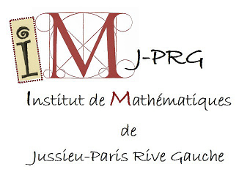| Résume | The category of Kashiwara crystals for a semisimple complex Lie algebra $\mathfrak{g}$ is a combinatorial model of the tensor category of finite-dimensional $\mathfrak{g}$-modules, where $\mathfrak{g}$-modules are represented by colored oriented graphs with the weight vectors being represented by points (marked by the weights of the representation), and the action of the Chevalley generators being represented by arrows (marked by simple roots). Kashiwara crystals form a monoidal category in which the tensor product is not symmetric, but the tensor products of two crystals in different orders are still connected by some functorial isomorphism called commutor. This structure is similar to braiding in the category of representations of the quantum group $U_q(\mathfrak{g})$ (and, in fact, comes from it), but the commutors do not satisfy the braid group relation. In particular, on the tensor power of a given crystal, all possible commutors generate not the action of the braid group $B_n$, but the action of another group $J_n$, called the cactus group -- the $S_n$-equivariant fundamental group of $\overline{M_{0 ,n+1}}(\mathbb{R})$, the Deligne-Mumford compactification of the moduli spaces of real stable rational curves with $n+1$ marked points. Such monoidal categories are called coboundary. I will describe my general construction with Joel Kamnitzer, Iva Halacheva, and Alex Weekes of a coboundary monoidal category as a family of compatible coverings over real Deligne-Mumford spaces, thus explaining the appearance of the real Deligne-Mumford compactification in this context. This construction gives two equivalent definitions of the category of Kashiwara crystals for a given semisimple Lie algebra $\mathfrak{g}$: 1) using solutions of the Bethe ansatz in the Gaudin magnet chain corresponding to the Lie algebra $\mathfrak{g}$, and 2) using $\mathfrak{g}^\vee$-opers (with respect to the Langlands dual Lie algebra $\mathfrak{g}^\vee$). This helps to compute some monodromy of solutions of Bethe ansatz equations for quantum magnet chains. |

